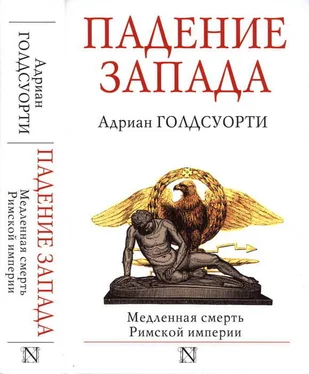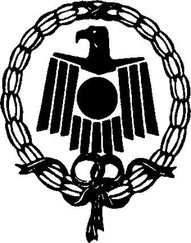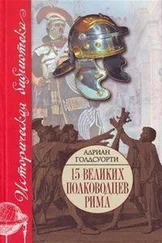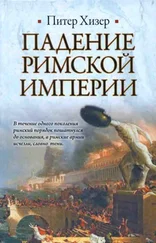См.: Ward-Perkins В. The Cities //САН. 2 nded. Vol. XIII. P. 373-382.
Paulin. Vita Ambr. 31; о дискуссии по этому поводу см.: Williams, Friell (1994). P. 131 — 137, более детально — McLynn N. Ambrose of Milan: Church and Court in a Christian Capital. Berkeley, 1994.
Cod. Theodos. XVI. 1. 2, цит. по: Mitchell S. A History of the Later Roman Empire ad 284—641. Maiden; Oxford, 2007. P. 247—248. (Если быть точнее, ссылка должна быть дана на Cod. Theodos. XVI. 1. 2рг — 1.2. 1. — Примеч. пер.)
Williams, Friell (1994). P. 47-60.
См.: Hunt D. The Church as a Public Institution // САН. Ed 2 nd. Vol. XIII Cambridge, 1998. P. 240-250.
О синагогах см.: Mitchell (2007). Р. 235—237.
О взаимоотношениях Амвросия и Феодосия см.: Williams & Friell (1994). P. 64-65, 68-70; Mitchell (2007). P. 248-250.
Kelly Ch. Emperors, Government and Bureaucracy // САН. 2 nded. Vol. XIII. P. 153—156; Lenski N. The Failure of Empire: Valens and the Roman State in the Fourth Century AD. Berkeley, 2002. P. 86—97, 142—143.
Greg. Nyss. De Deitate Filii et Spiritus Sanctis// MigneJ.-P. Patrologia Graeca. 46. 557—558.
Представление о диспутах того времени можно получить в работе: Chadwick H. Orthodoxy and Heresy from the Death of Constantine to the Eve of the First Council of Ephesus // САН. 2 nded. Vol. XIII. P. 561-600.
См.: Williams & Friell (1994). P. 119-125, Mitchell (2007). Р. 248-251, Fowden (2005). P. 548-554.
О проявлении могущества христианских лидеров и праведников как важном факторе обращения в христианство см.: Mac Mullen R. Christianizing the Roman Empire ad 100—400. New Haven, 1984; о церкви в целом см.: Chadwick H. The Church in Ancient Society: From Galilee to Gregory the Great. Oxford, 2001.
Об Ульфиле, Савве и христианстве у готов см.: Heather P. The Goths. Oxford, 1996. P. 60-62, 73-74, 85, 313; Wolfram H. The Roman Empire and its Germanic Peoples. Berkeley; Los Angeles; London, 1991. P. 69—70, 72—73, 76—79; Kulikowski M. Rome's Gothic Wars. From the Third Century to Alaric. Cambridge, 2007. P. 107—111, 118—122; Greatrex G. The Gothic Arians after Theodosius (to Justinian) // Studia Patristica. Vol. 34. 2001. P. 73—81; Bums T.S. Rome and the Barbarians, 100 ВС —AD 400. Baltimore, 2003. P. 337-338, 368-369.
Zosim. Hist. nova. V. 26. 5.
Orient. Commonit. II. 184.
О «Notitia Dignitatum» см.: Jones A. H.M. The Later Roman Empire: A Social, Economic and Administrative Survey. Vol. II. Oxford, 1964. P. 1417—1450, а также подборку статей в: Aspects of the «Notitia Dignitatum» / Eds. R. Goodburn & P. Bartholomew. Oxford, 1976 (BAR Supplementary Series, 15), и работу М. Куликовского: Ku/ikowski M. The «Notitia Dignitatum» as a Historical Source // Historia. Bd 99. 2002. P. 358— 377. «Notitia Dignitatum» / Hrsg. O. Seeck. 1876 остается одним из наиболее доступных изданий, но см. также: La «Notitia Dignitatum»: Nueva Ediciyn Critica у Comenatrio Histyrico: Nueva Roma 25 (2005), где имеются куда более информативные цветные вклейки.
Что касается щитов, см.: Grigg R. Inconsistency and Lassitude: The shield Emblems of the «Notitia Dignitatum» //JRS. Vol. 73. 1983. P. 132— 142.
См.: Matthews J. Mauretania in Ammianus and the «Notitia» // Aspects of the «Notitia Dignitatum» / Eds. R. Goodburn & P. Bartholomew. Oxford, 1976 (BAR Supplementary Series, 15). P. 157—186.
См.: Tomlin R. «Notitia Dignitatum omnium, tarn civilium quam militarium» // Ibid. P. 189—209; о проблеме назначения нескольких человек на один и тот же пост в Египте см.: JonesA.H.M. The Later Roman Empire: A Social, Economic and Administrative Survey. Vol. I. Oxford, 1964. P. 393; даются отсылки на издание: The Abinnaeus Archive: Papers of a Roman Officer in the Reign of Constantius II / Eds. H. Bell, V. Martin, E. Turner & D. van Berchem. Vol. 1. Oxford, 1964.
Предположение, будто «наш» вариант «Notitia Dignitatum» был подготовлен в штабе магистра пехоты в Западной империи, см. работу Дж. Манна: Mann J. What was the «Notitia Dignitatum» for? // Aspects of the «Notitia Dignitatum» / Eds. R. Goodburn & P. Bartholomew. Oxford, 1976. P. 1-9.
О численности см. дискуссию в издании: Treadgold W. Byzantium and its Army, 284—1081. Stanford, 1995. P. 43—64. Агафий Миринейский, писавший в 580-х годах, утверждает, что в прежние времена армия насчитывала 645 тысяч человек (Agath. V. 13. 7—8); о структуре армии в целом см. работу: Elton H. Military Forces //The Cambridge History of Greek and Roman Warfare / Ed. P. Sabin, H. Van Wees, M. Whitby. Vol. II. Cambridge, 2007. P. 270-309.
См. в целом: O'Flynn J. Generalissimos of the Western Roman Empire. Alberta, 1983. P. 1—24, Williams S., Friell G. Theodosius: The Empire at Bay. London, 1994. P. 143—158, Burns T. Barbarians within the Gates of Rome: A Study of Roman Military Policy and the Barbarians, ca. 375—425 A.D. Bloomington, 1994. P. 148—182, а также: Matthews J. Western Aristocracies and Imperial Court: AD 364—425. Oxford, 1975. P. 253—283.
Перечень источников, повествующих о данном эпизоде, см. в работе: Greatrex (7., Lieu S. The Roman Eastern Frontier and the Persian Wars. Pt 2. AD 363-630. London; New York, 2002. P. 17-19.
О происхождении Алариха и его мятеже см.: Kulikowski М. Rome's Gothic Wire. Baltimore, 2007. P. 156-158, 176-177, 188, Wolfram H. The Roman Empire and its Germanic Peoples. Berkeley, 1997. P. 89—94 Heather P.J. The Goths. Oxford; Cambridge, 1996. P. 138—146, а также: idem. Goths and Romans, 332-489. Oxford, 1991. P 183-188, 193 и далее; о роли «варваров» в армии см.: Liebeschuetz W. Barbarians and Bishops: Army, Church, and State in the Age of Arcadius and Chrysostom. Oxford, 1990. P. 7-88.
Zosim. V. 4-8.
Читать дальше
Конец ознакомительного отрывка
Купить книгу










